Potrebujeme váš súhlas na využitie jednotlivých dát, aby sa vám okrem iného mohli ukazovať informácie týkajúce sa vašich záujmov. Súhlas udelíte kliknutím na tlačidlo „OK“.
ASTM D7766/D7766M-11
Standard Practice for Damage Resistance Testing of Sandwich Constructions
Automaticky preložený názov:
Štandardné praktiky pre odolnosť proti poškodeniu skúšanie Sandwich stavieb
NORMA vydaná dňa 15.11.2011
Informácie o norme:
Označenie normy: ASTM D7766/D7766M-11
Poznámka: NEPLATNÁ
Dátum vydania normy: 15.11.2011
Kód tovaru: NS-39084
Počet strán: 9
Približná hmotnosť: 27 g (0.06 libier)
Krajina: Americká technická norma
Kategória: Technické normy ASTM
Kategórie - podobné normy:
Anotácia textu normy ASTM D7766/D7766M-11 :
Keywords:
core, damage resistance, delamination, dent, disbond, drop-weight impact, facing, impact testing, quasi-static indentation, sandwich, sandwich construction, ICS Number Code 83.120 (Reinforced plastics)
Doplňujúce informácie
| Significance and Use | ||||||||||||||||||||||
|
This practice provides supplemental instructions that allow Test Methods D6264/D6264M (for quasi-static indentation testing) and D7136/D7136M (for drop-weight impact testing) to determine damage resistance properties of sandwich constructions. Susceptibility to damage from concentrated out-of-plane forces is one of the major design concerns of many structures made using sandwich constructions. Knowledge of the damage resistance properties of a sandwich panel is useful for product development and material selection. Sandwich damage resistance testing can serve the following purposes: To establish quantitatively the effects of facing geometry, facing stacking sequence, facing-to-core interface, core geometry (cell size, cell wall thickness, core thickness, etc.), core density, core strength, processing and environmental variables on the damage resistance of a particular sandwich panel to a concentrated quasi-static indentation force, drop-weight impact force, or impact energy. To compare quantitatively the relative values of the damage resistance parameters for sandwich constructions with different facing, core or adhesive materials. The damage response parameters can include dent depth, damage dimensions and location(s), indentation or impact force magnitudes, impact energy magnitudes, as well as the force versus time curve. To impart damage in a specimen for subsequent damage tolerance tests. Quasi-static indentation tests can also be used to identify a specific sequence of damage events (only the final damage state is identifiable after a drop-weight impact test). The properties obtained using these practices can provide guidance in regard to the anticipated damage resistance capability of sandwich structures with similar materials, geometry, stacking sequence, and so forth. However, it must be understood that the damage resistance of a sandwich structure is highly dependent upon several factors including geometry, thickness, stiffness, mass, support conditions, and so forth. Significant differences in the relationships between force/energy and the resultant damage state can result due to differences in these parameters. For example, properties obtained using edge-supported specimens would more likely reflect the damage resistance characteristics of a sandwich panel away from substructure attachments, whereas rigidly-backed specimens would more likely reflect the behavior of a panel local to substructure which resists out-of-plane deformation. Similarly, edge-supported impact test specimen properties would be expected to be similar to those of a sandwich panel with equivalent length and width dimensions, in comparison to those of a panel significantly larger than the test specimen, which tends to divert a greater proportion of the impact energy into elastic deformation. Procedure A (quasi-static indentation using a rigidly-backed specimen) is considered to be the most suitable procedure for comparison of the damage resistance characteristics of sandwich panels of varying material, geometry, stacking sequence and so forth. This is because the rigid backing plate resists out-of-plane deformation of the specimen, such that the sandwich flexural stiffness and support geometry have less influence on damage initiation and growth behavior than in edge-supported tests. However, it should be noted that damage resistance behavior observed using rigidly-backed specimens may not strictly translate to edge-supported applications. For example, sandwich constructions using cores with high compression stiffness or strength, or both (e.g., balsa wood) may exhibit superior performance in rigidly-backed tests, but that performance may not strictly translate to edge-supported tests in which the core shear stiffness, core shear strength and sandwich panel flexural stiffness have greater influence upon the test results. Consequently, it is imperative to consider the intended assessment and structural application when selecting a test procedure for comparative purposes, and as such the use of Procedures B and C may be more appropriate for some applications. For some structural applications, the use of a rigidly-backed specimen in drop-weight impact testing may be appropriate. Specific procedures for such testing are not included in this practice, but the general approach detailed for Procedure C may be useful as guidance material when conducting such assessments. Such tests should be performed in consideration of the implications of using rigidly-backed support conditions, such as their effect upon contact forces and sandwich deformation under impact, as well as the potential for damage to the test apparatus. The standard indenter and impactor geometries have blunt, hemispherical tips. Historically, these tip geometries have generated a larger amount of internal damage for a given amount of external damage, when compared with that observed for similar indentations or impacts using sharp tips. Alternative indenter and impactor geometries may be appropriate depending upon the damage resistance characteristics being examined. For example, the use of sharp tip geometries may be appropriate for certain facing penetration resistance assessments. Some testing organizations may desire to use these practices in conjunction with a subsequent damage tolerance test method to assess the residual strength of specimens containing a specific damage state, such as a defined dent depth, damage geometry, damage location, and so forth. In this case, the testing organization should subject several specimens, or a large panel, to multiple indentations or impacts, or both, at various energy levels using these practices. A relationship between force or energy and the desired damage parameter can then be developed. Subsequent residual strength tests can then be performed using specimens damaged using an interpolated energy or force level that is expected to produce the desired damage state. |
||||||||||||||||||||||
| 1. Scope | ||||||||||||||||||||||
|
1.1 This practice provides instructions for modifying laminate quasi-static indentation and drop-weight impact test methods to determine damage resistance properties of sandwich constructions. Permissible core material forms include those with continuous bonding surfaces (such as balsa wood and foams) as well as those with discontinuous bonding surfaces (such as honeycomb, truss cores and fiber-reinforced cores). 1.2 This practice supplements Test Methods D6264/D6264M (for quasi-static indentation testing) and D7136/D7136M (for drop-weight impact testing) with provisions for testing sandwich specimens. Several important test specimen parameters (for example, facing thickness, core thickness and core density) are not mandated by this practice; however, repeatable results require that these parameters be specified and reported. 1.3 Three test procedures are provided. Procedures A and B correspond to D6264/D6264M test procedures for rigidlybacked and edge-supported test conditions, respectively. Procedure C corresponds to D7136/D7136M test procedures. All three procedures are suitable for imparting damage to a sandwich specimen in preparation for subsequent damage tolerance testing. 1.4 In general, Procedure A is considered to be the most suitable procedure for comparative damage resistance assessments, due to reduced influence of flexural stiffness and support fixture characteristics upon damage formation. However, the selection of a test procedure and associated support conditions should be done in consideration of the intended structural application, and as such Procedures B and C may be more appropriate for comparative purposes for some applications. 1.5 The values stated in either SI units or inch-pound units are to be regarded separately as standard. The values stated in each system are not exact equivalents; therefore, each system must be used independently of the other. Combining values from the two systems may result in non-conformance with the standard. 1.5.1 Within the text the inch-pound units are shown in brackets. 1.6 This standard does not purport to address all of the safety concerns, if any, associated with its use. It is the responsibility of the user of this standard to establish appropriate safety and health practices and determine the applicability of regulatory limitations prior to use. |
||||||||||||||||||||||
| 2. Referenced Documents | ||||||||||||||||||||||
|
Podobné normy:
Historická
1.12.2012
Historická
1.9.2009
Historická
1.3.2008
Historická
1.5.2008
Historická
1.3.2008
Historická
1.3.2008
Odporúčame:
EviZak - všetky zákony vrátane ich evidencie na jednom mieste
Poskytovanie aktuálnych informácií o legislatívnych predpisoch vyhlásených v Zbierke zákonov od roku 1945.
Aktualizácia 2x v mesiaci !
Chcete vedieť viac informácii ? Pozrite sa na túto stránku.


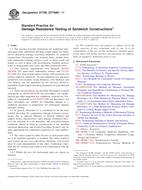
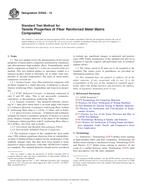 ASTM D3552-12
ASTM D3552-12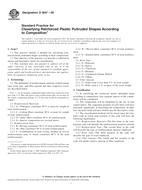 ASTM D3647-09
ASTM D3647-09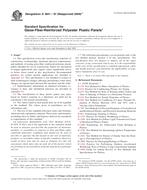 ASTM D3841-97(2008)e..
ASTM D3841-97(2008)e..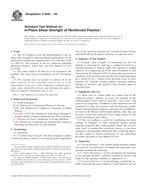 ASTM D3846-08
ASTM D3846-08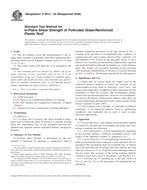 ASTM D3914-02(2008)..
ASTM D3914-02(2008)..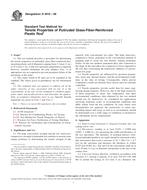 ASTM D3916-08
ASTM D3916-08
 Cookies
Cookies
